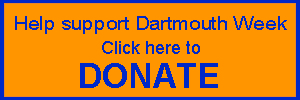Four decades later, still work to be done to combat HIV/AIDS, speakers say
Forty years before Covid-19 dominated the national health headlines, another mysterious new illness began striking down portions of the population, many of them young and otherwise healthy.
AIDS was first reported in 1981 as a “gay cancer’’ that seemed to primarily impact homosexual men who were presenting with purple spots on the skin and swollen lymph nodes.
In the 40 years since, 700,000 Americans of all ages, races and sexual orientations have died from the disease.
These days, with advanced treatments, a diagnosis of HIV/AIDS no longer serves as a death sentence. But work remains to be done to educate the public and to find a cure, said Dartmouth native Andrew Pollock, president of The South Coast LGBTQ+ Network.
That was one of the messages delivered at the first South Coast World AIDS Day Conference, which was held Wednesday, Dec. 1, in commemoration of World AIDS Day. The conference was held at UMass Dartmouth and sponsored by the UMass Dartmouth Center for Women, Gender and Sexuality.
“We need to find ways to overcome the barriers to finding a permanent solution, including discrimination, homophobia, systemic racism, poverty, and unequal access to quality healthcare,’’ Pollock said.
The situation has definitely improved, thanks to research and funding, much of it promoted and inspired by activist organizations, according to material provided at the conference.
These days, people are primarily living with, rather than dying from, HIV infections. There are 1.2 million people living with HIV in the United States, according to statistics from the Centers for Disease Control.
“It’s scary to get the call that you’re [HIV] positive’’ but the situation is not dire as it was in the 1980s and 1990s, said Dr. Shabana Naz, medical director of infectious diseases with the Greater New Bedford Community Health Center in New Bedford. “You can go about your life, you can have a family. There has been a lot of progress.’’
Much of that change is due to advanced treatments. Antiretroviral therapy reduces the amount of HIV in the body. Taking this medication regularly can drop the amount of HIV in the blood to a very low level, known as viral suppression.
Patients whose viral loads drop to undetectable levels have effectively no risk of transmitting HIV to an HIV-negative partner through sex, according to the Centers for Disease Control.
A daily oral medication is also available — known as pre-exposure prophylaxis, or PrEP — to prevent people at risk from getting the disease.
New HIV infections dropped 8% nationally from 2015 to 2019, when 34,800 new infections were reported.
Subsequently, the HIV positive population is aging. In Bristol and Plymouth counties, the HIV population ages 65 and older, although markedly smaller than their younger counterparts, has grown by more than a third — 36.1% — in just one year, between 2018 and 2019.
The illness affects communities of color disproportionately.
Nearly half of people living with AIDS in 2018 —41 percent — were black, although only 13% of the overall population is black. Twenty-three percent are Latino, compared to 18%of the general population. Whites account for 29% of those living with AIDS, although they make up 60%of the population.
Educating people about these treatments is crucial, speakers at the conference said.
“The only way we are going to improve this is to talk about this and share this,’’ said Brian Costa, nurse practitioner at the Greater New Bedford Community Health Center.
One way to address this imbalance, said Naz, is to sponsor more medical trials with people of color and underserved communities.
“We need to keep pressure on’’ for funding, Naz said.
Continued improvement in treatments and increased public awareness can help meet the goal of fewer than 3,000 annual HIV infections by 2030.
“We have come a long way in 40 years,’’ Pollock said. “I am hopeful that with the new medications, treatments and awareness, we are progressing to finally ending this disease.’’













